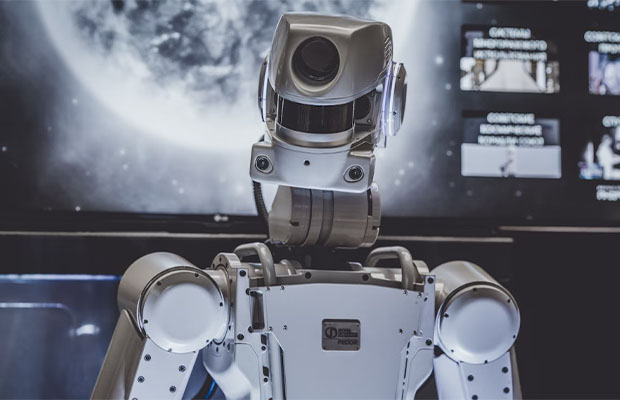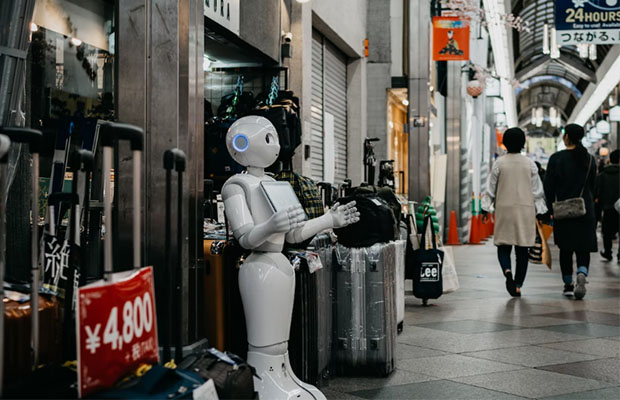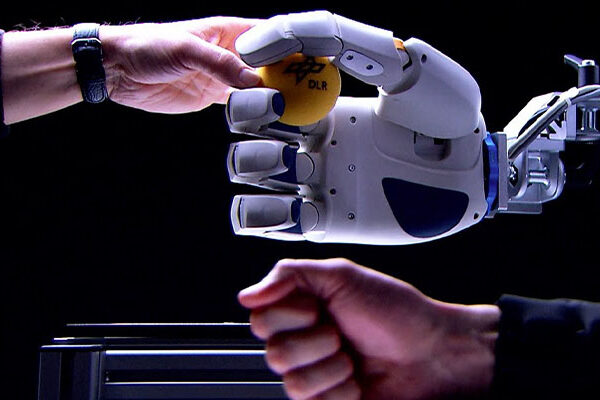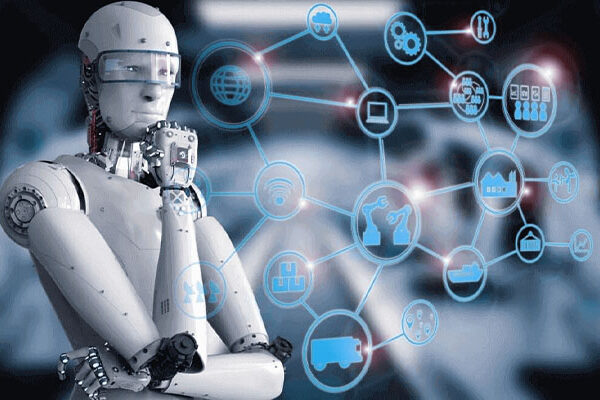Businesses need to be aware of the potential repercussions of using artificial intelligence (AI) models as they become more significant and prevalent in almost every industry.
Automation of logical inference and decision-making in business intelligence is facilitated by artificial intelligence models (machine learning and deep learning).
An overview of AI models and their various applications will be given in this guide. We’ll look at some of the most common applications for AI models and talk about how to use them successfully in professional and other contexts.
Table of Contents
What Is Artificial Intelligence Model?
The third step in the data pipeline, which comes after data gathering and preparation, entails developing intelligent machine learning models to support advanced analytics. These models imitate human expertise by using a variety of algorithms, such as linear or logistic regression, to identify patterns in the data and reach conclusions. Simply put, AI modeling is the development of a decision-making procedure that includes the following three fundamental steps:
- Modeling: In order to interpret data and make decisions based on it, the first step is to develop an AI model, which employs a sophisticated algorithm or layers of algorithms. In any given use case, an effective AI model can stand in for human expertise.
- AI model training: The AI model must be trained in the next step. In order to ensure accuracy and that the AI model is acting as expected and desired, training typically entails processing significant amounts of data through the model in iterative test loops. The results are then checked. During this process, engineers are on hand to alter and enhance the AI model as it learns.
- Inference: Inference is the name for the third step. This step entails deploying the AI model into its actual use case, where it regularly draws logical conclusions from the information at hand.
A complex process, AI/ML has high computational, storage, data security, and networking requirements. Intel® Xeon® Scalable processors, Intel® storage and networking solutions, and Intel® AI toolkits and software optimizations provide a range of resources to assist businesses in easily and affordably designing and deploying AI/ML solutions.

History Of Artificial Intelligence Models
The first people to use computation as a tool for formal reasoning were the mathematicians Alonzo Church and Alan Turing. In 1936, they created the Church-Turing hypothesis, which contends that any real-world computation can be converted into an equivalent computation involving a Turing machine. The Turing machine was created shortly after Turing developed his thesis, which expanded the possibilities for computer learning. People started to think it might be feasible to create an electronic brain.
It took some time for the “electronic brain” to develop into a sophisticated theory because widespread access to computers didn’t exist in 1936. The Turing model was only speculative, but in 1943, logician Walter Harry Pitts and neuroscientist Warren Sturgis McCulloch formalized it to produce the first computation theory of mind and brain. They described how neural mechanisms in computers could realize mental functions in a paper titled “A Logical Calculus of the Ideas Immanent in Nervous Activity.”
However, because computers could not store commands, artificial intelligence was not a reality until 1949. They were able to execute them, but they were unable to save an AI model. Due to the high cost of computing, no one had yet made that reality a reality. The term artificial intelligence wasn’t even coined until 1955, and it was in that same year that computer scientist and cognitive psychologists Allen Newell, Cliff Shaw, and Herbert Simon created a proof of concept for artificial intelligence. In order to simulate human problem-solving abilities, they created the Logic Theorist, an artificial intelligence program.11
Many people developed an interest in creating artificial intelligence models as a result of that point forward. American computer scientist Tom Mitchell provided a more thorough definition of artificial intelligence in 1997. He defined it as “a computer program is said to learn from experience E with respect to some task T and some performance measure P, if its performance on T, as measured by P, improves with experience E.”
Let’s illustrate this with the help of the Google Maps example. If you want a computer to predict traffic patterns (task T), you would run a program through an artificial intelligence model with information about past traffic patterns (experience E), and once it has learned, it will perform better at predicting future traffic patterns (performance P).
Uses Of Artificial Intelligence Model
In Medicine
Patients with cancer may be detected by artificial intelligence models. They can find abnormalities in the human body linked to cancer by examining X-Ray and CRT images. Since these models follow machine learning these days, they are improving in accuracy and are now able to identify even abnormal cancers because they have gained experience.
In Communication
Ever wonder how our phones can anticipate what we will say next? Our phones suggest words to use next in text messages or anticipate the conclusion of emails. When they believe we have spelled a word incorrectly, they also offer us suggestions. All of this is made possible by artificial intelligence models, which allow our phones to anticipate our next words by analyzing our previous communications and the communication patterns of the general population.
Chatbots & Digital Assistants
Whether it’s Alexa or Siri, chatbots have replaced customer service representatives. By analyzing the customer’s query and comparing it to prior experiences, chatbots can quickly respond to frequently asked questions. The desired function is carried out by digital assistants after they have processed and analyzed the data and listened to your voice.
Targeted Ads
Although there have been rumors that our phones are secretly listening to us, the reality is that they already have a wealth of information about us and don’t even need to do so in order to fill our social media with relevant advertisements. Artificial intelligence models predict the products you are most likely to purchase and present them to you on your feeds based on your past searches, the searches of people in your network, and demographic indicators.
Machine And Deep Learning
Any methodology in which machines or computers simulate human decision-making capacity based on available data is referred to as AI. Machine learning is specifically the use of AI in the form of algorithms to enable automated tasks. The ability of machine learning to learn from more data as it is processed and improve its judgment over time is one of its key characteristics.
Deep learning is a subset of machine learning where the structure of the AI algorithms is more complex and potent, resulting in what is known as a neural network. Deep learning models will still go through an iterative test-loop process where engineers will continuously adjust the model to improve accuracy and get the model to recognize more layers of nuance beyond what machine learning is capable of.
Importance Of Artificial Intelligence Model In Business
In business, data and artificial intelligence are becoming more and more crucial. Companies use AI models to make use of the unprecedented amount of data being produced. AI models can resolve issues that would otherwise be too challenging or time-consuming for humans to handle when applied to real-world issues.
We identify a few crucial tactics for how the use of AI models will influence businesses:
- Strategy 1: Collect data to build AI models
- Strategy 2: Use AI models to generate new data
- Strategy 3: Use AI models to understand data
- Strategy 4: Automate tasks using AI models
Collect Data To Train Artificial Intelligence Model
When competitors have no or limited access to data, or when obtaining it is challenging, the capacity to gather data for training is of the utmost importance. Businesses can train AI models and continuously retrain (improve) existing models thanks to data. Data can be gathered in a variety of ways, such as through sensor or camera use, web scraping, or other means. Generally speaking, having access to a lot of data makes it possible to develop competitive advantages by training AI models that perform better. Data collection for computer vision training with Viso Suite
Artificial Intelligence Model Can Be Used To Generate New Data
A model can produce new data that is similar to the training data, for instance by using a Generative Adversarial Network (GAN). The ability to generate artistic and photorealistic images is provided by new, generative AI models (like DALL-E 2). AI models can also be used to create entirely new data sets (synthetic data) or artificially increase the size of existing data (data augmentation) in order to train algorithms with greater sturdiness. Data augmentation to generate new data
Artificial Intelligence Model Can Be Used To Analyze Existing Data
The model inference is the practice of using a model to foretell an outcome given an input. This is accomplished by running the model algorithm on fresh input data (pre-existing data or real-time sensory data) that it has never previously “seen,” and then analyzing the outcomes. The model inference is typically used in practical AI applications to “apply” trained models to business tasks, such as performing object detection and tracking in video streams or performing person recognition.
AI Models Can Be Used To Automate Tasks
Models from artificial intelligence are incorporated into pipelines for use in business. Data acquisition, transformation, analysis, and output are some of the steps that make up a pipeline. Before supplying individual images to the DL model in computer vision applications, a vision pipeline acquires the video stream and performs image processing. This can be used, for instance, to automate visual inspection or perform automated object counting of bottles on conveyor belts when used in manufacturing. By enabling businesses to make better decisions based on data analysis, AI models can help them become more efficient, competitive, and profitable. DL models applied for bottle detection were built with Viso Suite. Since more and more businesses are implementing AI models to gain a competitive edge, they are likely to become even more significant in the business world in the future. Next, we’ll list the top AI models that you should be familiar with. We will then go through the entire list and describe each item individually.
Different Types Of AI Algorithms
By attempting to understand the relationship between numerous inputs of various types, AI models aim to predict outcomes or make decisions. The approach taken by various AI models varies, and AI developers can use several algorithms simultaneously to complete a task or perform a function.
- Linear regression maps the linear relationship between one or more X input(s) and Y output and is frequently depicted as a straight-line graph.
- Logistic regression maps the relationship between a binary X variable, and a Y output (such as true or false, present or absent, etc.).
- Linear discriminant analysis performs like logistic regression except starting data is characterized by separate categories or classifications.
- Decision trees apply branch patterns of logic to a set of input data until the decision tree reaches a conclusion.
- Naive Bayes is a classification technique that assumes there are no relationships between starting inputs.
- K-nearest neighbor is a classification technique that assumes inputs with similar characteristics will be near each when their correlation is graphed (in terms of Euclidean distance).
- Learning vector quantization is similar to a k-nearest neighbor, but instead of measuring the distance between individual data points, the model will converge like data points into prototypes.
- Support vector machine algorithms establish a divider, called a hyperplane, that distinctly separates data points for more accurate classification.
- Bagging combines multiple algorithms together to create a more accurate model, whereas random forest combines multiple decision trees together to get a more accurate prediction.
- Deep neural networks refer to a structure of many layers of algorithms that inputs must pass through, culminating in a final prediction or decision point.
Technology Requirements Of AI Modeling
Since AI models are getting so big, more data is needed to train them effectively, and the faster the data can be moved, the quicker the model can be trained and deployed. With high-performance CPUs, large storage capacities, and high-bandwidth network fabrics that can handle dense traffic flow, Intel-based platforms help provide configurations tailored for AI workloads.
- 3rd Gen Intel® Xeon® Scalable processors offer a high core count, a large amount of memory, PCIe 4.0 connectivity, as well as AI and security features that are only available on Intel® platforms. Deep learning inference is expedited while memory usage is decreased by Intel’s Deep Learning Boost (Intel’s DL Boost). To improve system security and enable federated learning of AI models in multiparty computing (where AI models from various entities can train on the same encrypted datasets), Intel’s Software Guard Extensions (Intel’s SGX) help isolates workloads in memory.
- Both memory and storage solutions are improved by Intel’s Optane technology. With PCIe interfaces that bring data closer to the CPU and offer incredible I/O speeds, Intel® Optane™ DC SSDs deliver extreme capacity. With performance that is nearly identical to DRAM and a large capacity, Intel’s Optane persistent memory enables data to remain in memory even after a system shutdown or reboot.
- The foundation for the low-latency data center fabrics that power your analytics engine is made up of Intel® Silicon Photonics and Intel® Ethernet 800 Series Network Adapters, both of which deliver speeds of up to 100GbE.
Intel Software Solutions For AI
The vast array of machine learning and deep learning software options currently offered on the market is a source of easy confusion. However, you can find widely used frameworks and libraries from a single source with Intel’s offerings, and they are all performance-optimized for Intel platforms.
- On Intel-enabled platforms, the Intel Distribution of OpenVINO™ toolkit enables you to optimize and accelerate AI inference, supporting quick time to results. This toolkit can be used for edge deployments of AI-enabled data generation or analysis as well as datacenter implementations.
- Pretrained AI models are available through the Intel AI Analytics Toolkit, a component of the Intel one API, which also includes the Intel distribution of popular frameworks like TensorFlow, PyTorch, and sci-kit-learn, all of which are enhanced for performance on Intel-enabled platforms. These tools can aid programmers in accelerating the time it takes to deploy their AI models.
- Built on the frameworks Apache Spark, TensorFlow, Keras, and BigDL, Analytics Zoo is a unified platform of AI and analytics tools for deep learning implementations. In order to simplify database integration and quick startup for deep learning projects, the platform also includes high-level abstractions and APIs.
The Bottom Line
In summary, various AI models are applied to address various issues, from self-driving cars to object detection, face recognition, and pose estimation.
AI-based modeling is the key to building automated, intelligent, and smart systems according to today’s needs
As a result, understanding the models is crucial to choose the one that is most appropriate for a given task. These models will undoubtedly be used across all industries in the not-too-distant future due to the rapid advancement in artificial intelligence adoption. Please comment below if you run into any difficulties.
Also Read:




